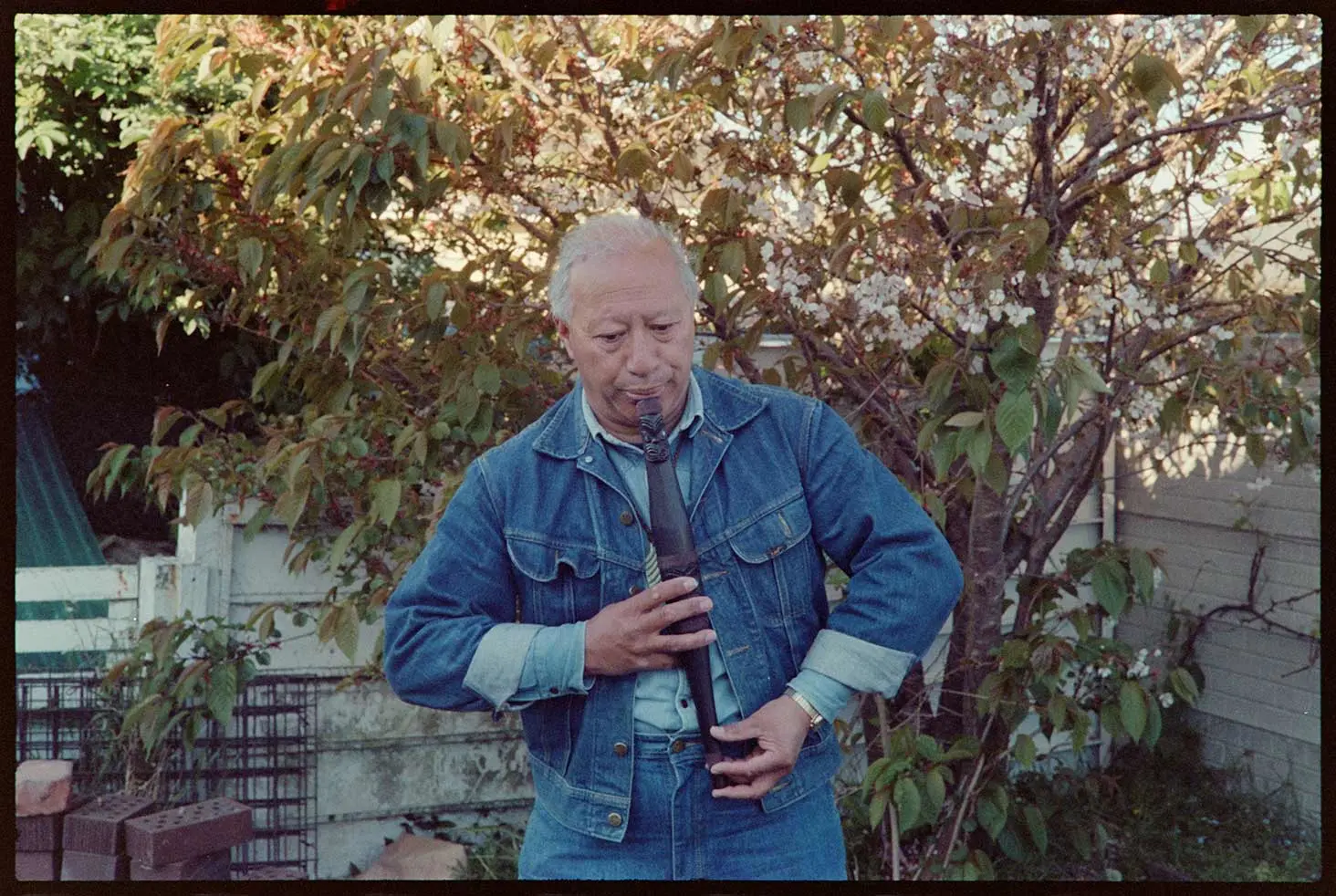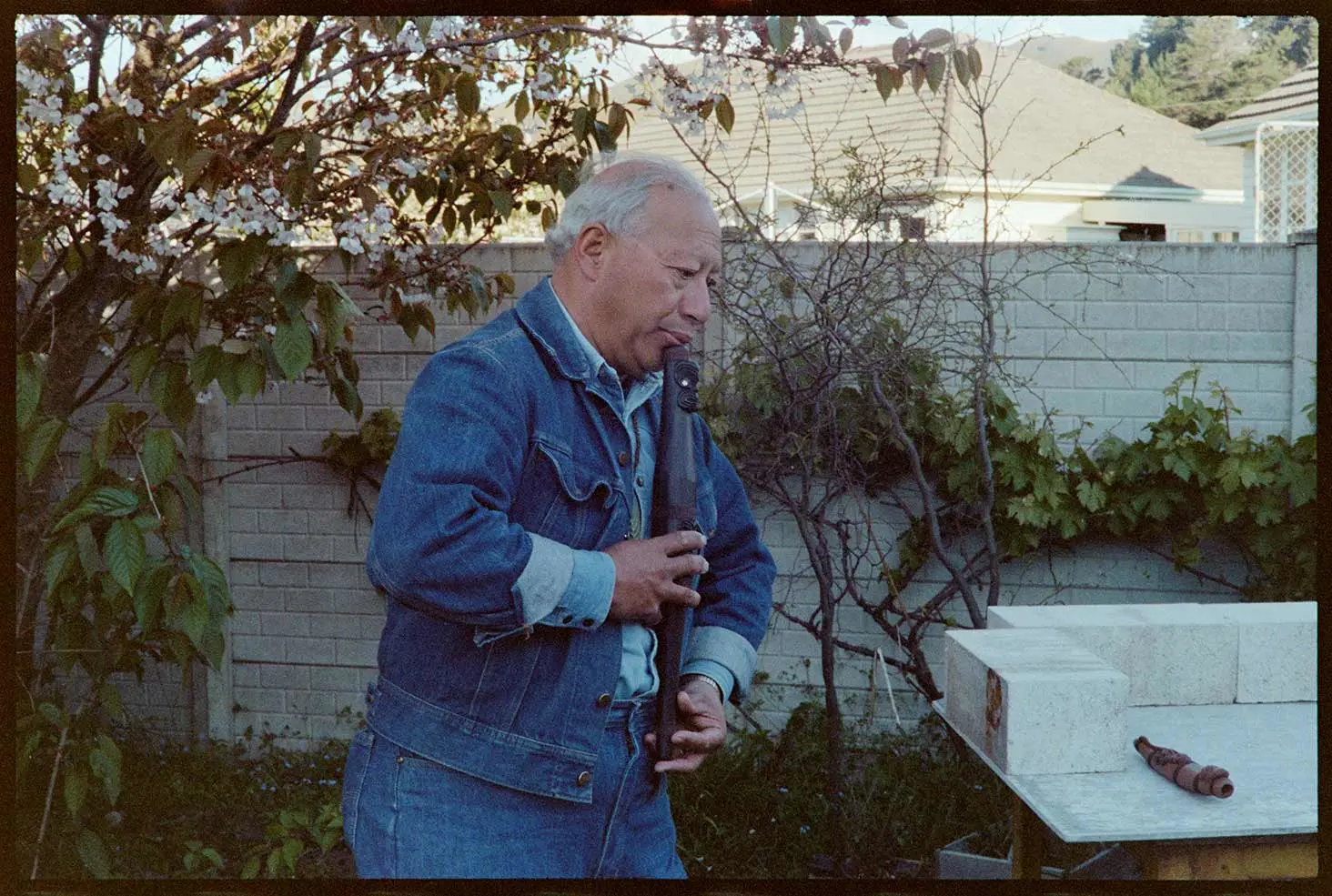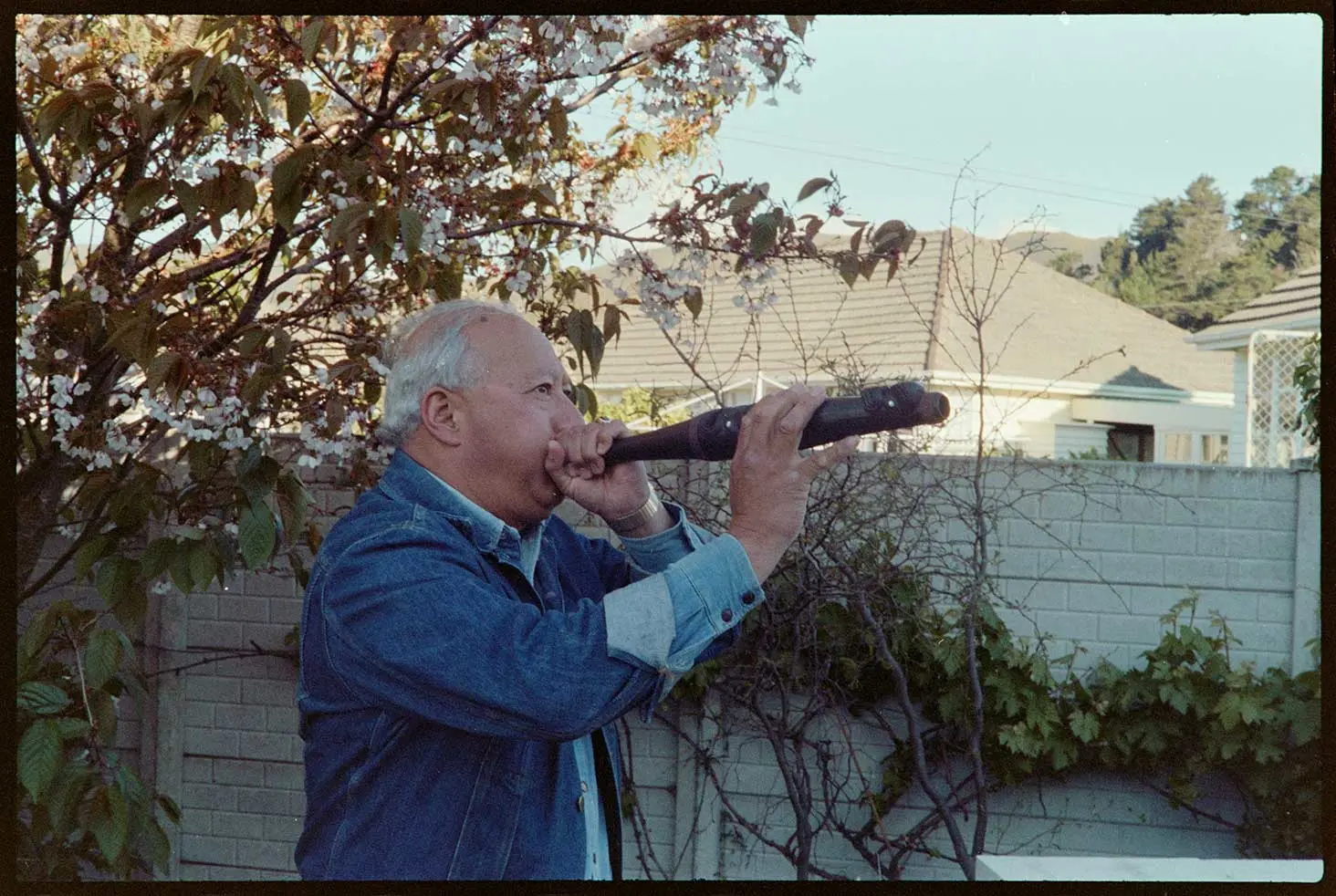Read a story about the revival of taonga puoro
Music has always been an integral part of life in te ao Māori. However, colonisation led to the near extinction of taonga puoro, the customary musical instruments whose voices accompanied the lives of our tīpuna. The archival collection of Richard Nunns (1945–2021), now in the Turnbull’s care, is a record of the remarkable revival of their making and playing. Nunns spent more than 30 years researching taonga puoro, helping to bring the knowledge of these instruments back into te ao mārama.
The collection documents the role Nunns played in Haumanu, the organisation of instrument players and makers that spearheaded the revival of taonga puoro. He was just one of many people involved, but he became a key public figure, particularly in the realm of performance. I was fortunate to be mentored by him after starting to play taonga puoro in the mid-2000s.
These images are from a series of photographs that Nunns took of Mauri Tirikatene (Ngāi Tahu) posing in various stances as he held and played a pūtōrino, the wooden flute that symbolically represents the cocoon of Hineraukatauri, the atua of flute music.
Tirikatene was taught to play by Herewini Hikanui, his maternal grandfather, one of a few people then who knew the art from customary times. In Nunns’ 2014 book Te Ara Puoro, Tirikatene spoke about the process of learning to play pūtōrino: ‘My grandfather would take me to the bush and demonstrate its use and then I would be expected to emulate what I had just been shown.’
Sir Apirana Ngata (Ngāti Porou; 1874–1950) once described the nuances he was able to glean from learning mōteatea chants directly from his elders, part of the richness of performance-based artforms passed on through intergenerational transmission — body language, expression and even humour — which is otherwise lost.
This is what I find so compelling about these images of Tirikatene. The sequence of movement in his stances entices me to want to know more. Does each stance have a name? What does each one mean? Did anyone else learn these stances, or is this the only record of them, physically encapsulated in nine 35-millimetre film negatives, now held in the basement of the Alexander Turnbull Library?
These questions now need to be explored by the next generation of Haumanu members, as the revival of these remarkable taonga continues.
Story written by: Ariana Tikao
Copyright: Turnbull Endowment Trust
Mauri Tirikatene in other poses with pūtōrino


